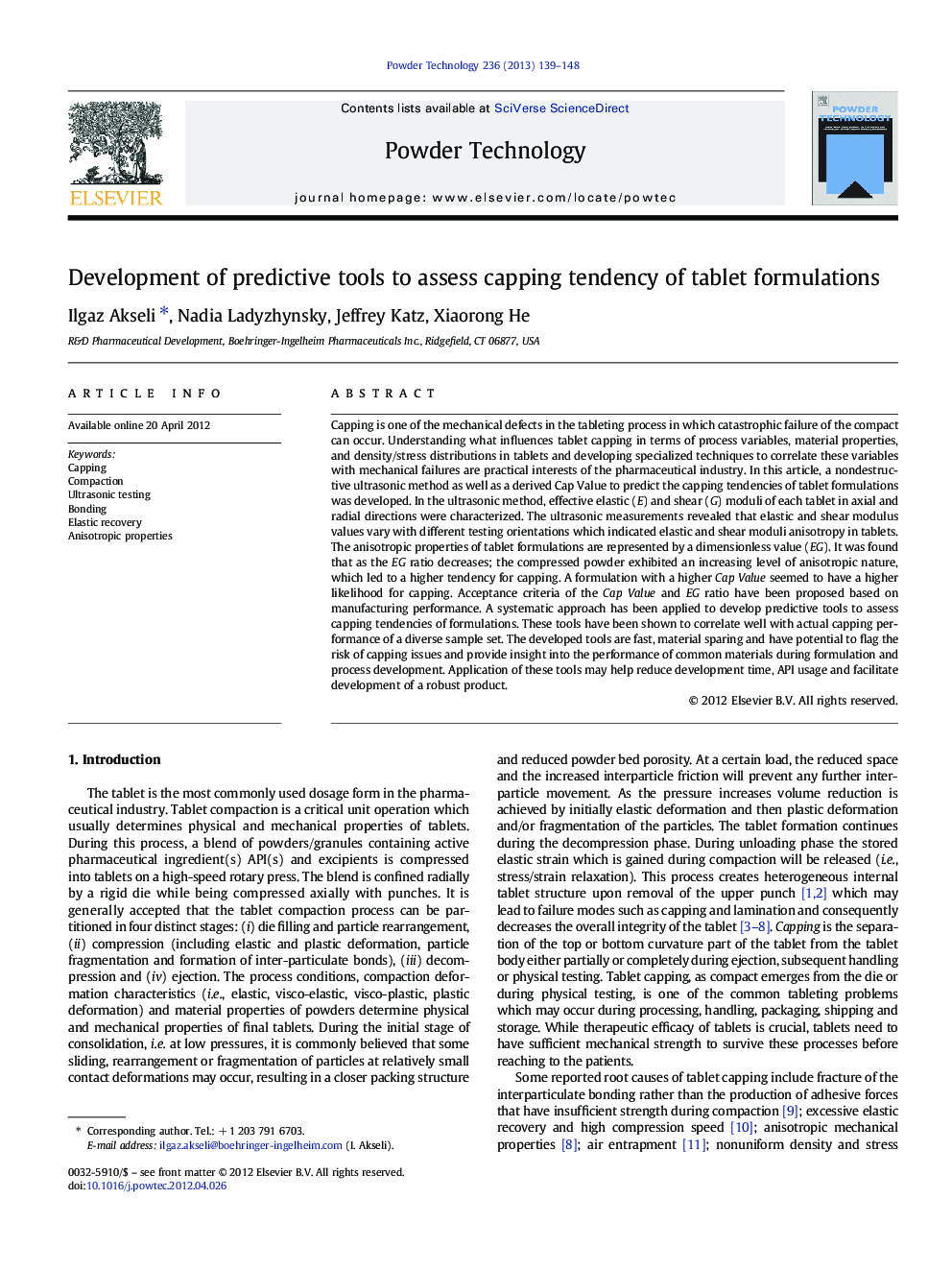| Article ID | Journal | Published Year | Pages | File Type |
|---|---|---|---|---|
| 236597 | Powder Technology | 2013 | 10 Pages |
Capping is one of the mechanical defects in the tableting process in which catastrophic failure of the compact can occur. Understanding what influences tablet capping in terms of process variables, material properties, and density/stress distributions in tablets and developing specialized techniques to correlate these variables with mechanical failures are practical interests of the pharmaceutical industry. In this article, a nondestructive ultrasonic method as well as a derived Cap Value to predict the capping tendencies of tablet formulations was developed. In the ultrasonic method, effective elastic (E) and shear (G) moduli of each tablet in axial and radial directions were characterized. The ultrasonic measurements revealed that elastic and shear modulus values vary with different testing orientations which indicated elastic and shear moduli anisotropy in tablets. The anisotropic properties of tablet formulations are represented by a dimensionless value (EG). It was found that as the EG ratio decreases; the compressed powder exhibited an increasing level of anisotropic nature, which led to a higher tendency for capping. A formulation with a higher Cap Value seemed to have a higher likelihood for capping. Acceptance criteria of the Cap Value and EG ratio have been proposed based on manufacturing performance. A systematic approach has been applied to develop predictive tools to assess capping tendencies of formulations. These tools have been shown to correlate well with actual capping performance of a diverse sample set. The developed tools are fast, material sparing and have potential to flag the risk of capping issues and provide insight into the performance of common materials during formulation and process development. Application of these tools may help reduce development time, API usage and facilitate development of a robust product.
Graphical abstractImages of diametrically failed (upper left) and capped (upper right) tablets after hardness testing, capped tablet upon ejection (lower left).Figure optionsDownload full-size imageDownload as PowerPoint slide
